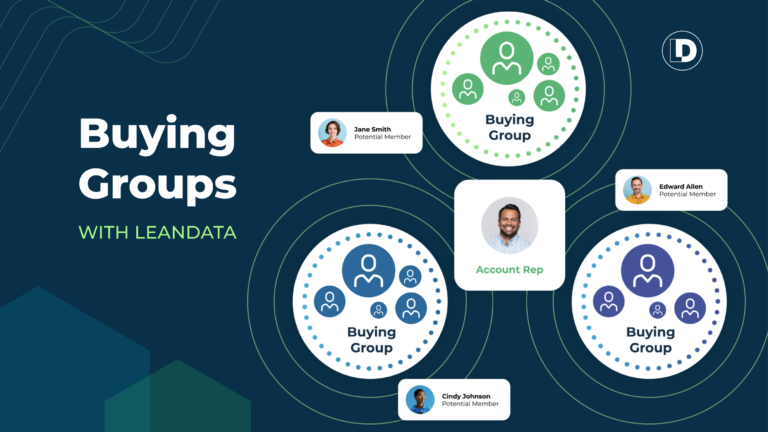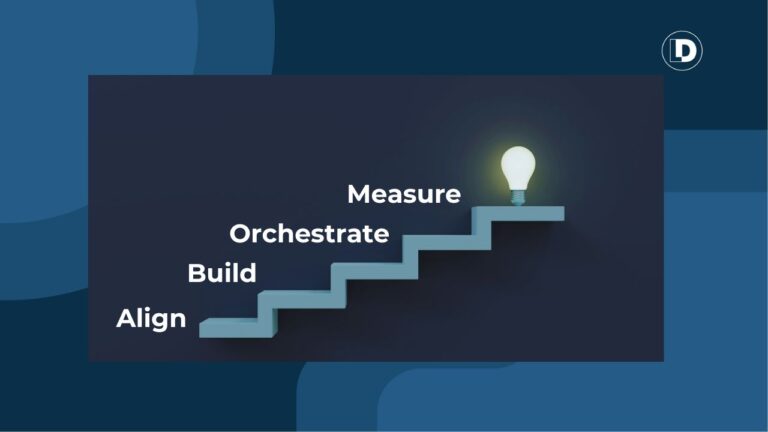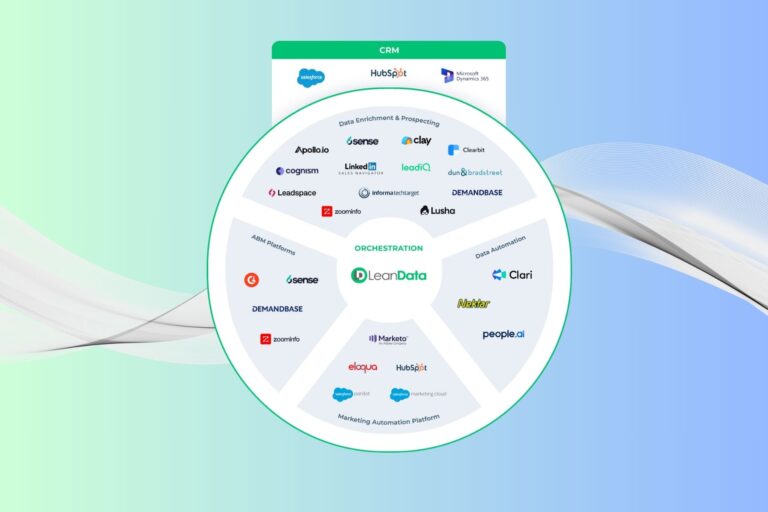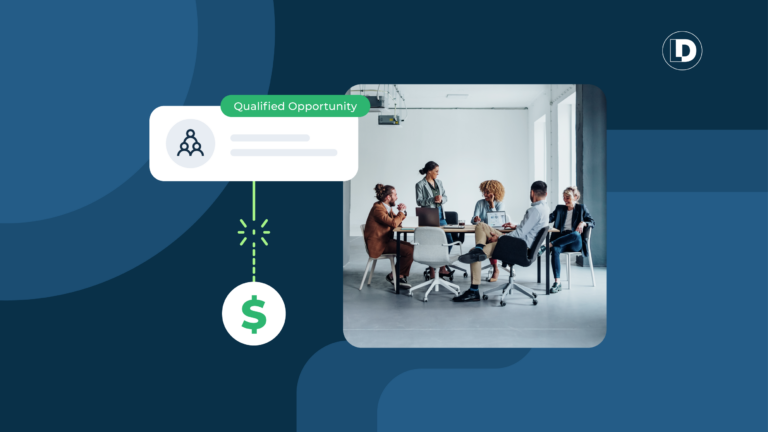Why Buying Groups Need to Prove Their Value
MQLs have been the go-to metric for years and make dashboards look great.
However, let’s be honest: how often do they turn into real revenue? Not often enough.
That’s because complex B2B deals rarely hinge on one person. Instead, they’re decided by a group of 13 people on average, according to Forrester. Yet most lead-centric models don’t reflect that reality.
As Forrester’s Principal Analyst Terry Flaherty puts it, “Buyers have used buying groups to make B2B buying decisions for years. What’s changed is our ability to look beyond the MQL to better understand the group.”
You’re leaving money on the table by working against the way buying happens if you’re still optimizing marketing around individual leads. The shift to a buying groups go-to-market motion changes that.
Specifically, it aligns sales and marketing around the full buying team, improving lead quality, pipeline velocity, and yes, revenue.
Palo Alto Networks did just that. As a result, they drove a 15% boost in revenue by activating a Buying Groups strategy.
Want to see how they did it? Let’s break it down.

Moving Beyond MQLs: The Right Metrics for Buying Groups
Companies have relied on MQLs and conversion rates to track marketing impact for years. But Marketing struggles to prove the impact of MQLs with other players involved in complex B2B purchase decisions.
Consequently, Sales teams and executives ignore them.
Sales teams want context on decision-makers so they can better anticipate and respond to their needs. Moreover, they want Marketing to deliver a qualified buying group rather than a lead since that accelerates the sales cycle.
On the other hand, executives want to see revenue impact, not vanity metrics.

The Metrics That Actually Matter
The best Sales reps already work with full buying groups. After all, it’s how they win deals.
To get leadership on board, Marketing needs to track numbers that show real results, like:
- Buying Group Completeness Score: Tracks the percentage of required personas identified within an opportunity to answer “Did we engage everyone we need to?”
- MQL to Opportunity Conversion Rate: Measures how well marketing efforts are working. In other words, “Are our leads turning into actual sales opportunities”?
- Buying Group Influenced Pipeline: Ensures deals aren’t single-threaded by tracking how many pipeline opportunities include a complete buying group.
- Average Deal Size Growth: Helps determine whether buying groups are leading to bigger deals.
- Sales Cycles Acceleration: Compares deal velocity for buying group-driven deals vs. traditional lead-based deals so you know whether group-driven deals close faster.
Tracking these metrics doesn’t mean you should ditch your lead data. You can still use it, and keep engaging and nurturing leads.
But, by adding a focus on full buying groups, Marketing and Sales work together better. Ultimately, it also proves that Marketing is helping the business grow.

How Automation Enhances Buying Group Impact and Efficiency
Now for putting the strategy into action. It’s impossible to scale a Buying Groups strategy manually. There are too many stakeholders, too much data, and too many moving pieces.
But, no worries. You can call upon technology to operationalize this additional motion.
Key automation strategies that improve buying group effectiveness include:
- Lead and Contact Matching: Automatically associates leads with the right contacts and open Opportunities.
- Opportunity Expansion: Identifies missing decision-makers and adds them to the open Opportunities.
- Intent-Based Prioritization: Uses AI and intent data to detect which stakeholders are actively engaging.
- Reporting & Dashboards: Provides real-time visibility into buying group completeness and pipeline impact.
Palo Alto Networks realized the impact of these strategies firsthand. Initially, they managed buying groups manually.
However, they saw far better results once they automated two key processes:
- Adding new stakeholders to an existing Opportunity
- Seeking those people out
The automation kicked into place when a BDR received and accepted an MQL. This allowed BDRs to work more efficiently. In turn, they engaged and converted more leads and improved pipeline quality.

The Revenue Impact: From “Cute” Metrics to 15% Growth
While Palo Alto Networks’ BDRs were empowered to deliver stronger engagement and conversion rates, that wasn’t enough. Executives respond to growth- and revenue-related metrics, not just process improvements. In fact, the company’s CMO called the pilot conversion rates “cute.”
To deliver meaningful metrics, the MarketingOps team used historical data to compare buying group-influenced opportunities against traditional deals. Ultimately, the analysis revealed that deals with full buying group engagement vastly outperformed single-lead deals:
- 15% higher revenue
- 5x larger deal sizes
The CMO’s response said it all: “Let’s do more of this!”
So, Palo Alto Networks expanded the pilot to more teams and GTMs and ran it for another quarter.
The result of the broader pilot was a huge volume of impressive numbers showing better deal-related outcomes:
- Improved conversion rates
- Bigger deal sizes
- Higher close/won rates
These proof points paved the way for turning Buying Groups from a good idea into a scalable, revenue-driving strategy.

Replicating This Success in Your Organization
Shifting to an opportunity-centric GTM motion is the path to more revenue.
To get started with buying groups:
#1 Define Your Buying Groups: Analyze past deals to identify the key decision-makers. Specifically, take a look at the following in your CRM system. Correlate contacts with accounts to see who was involved in similar purchases. Review closed-won Opportunities to determine the personas that signed off.
Once done, you should know all roles, titles, and functions of each member of the Buying Group.
#2 Track the Right Metrics: Shift from MQL-based reporting to Buying Group-focused KPIs defined above. Additionally, consider tracking extra success metrics across the buying journey and post-sale to measure long-term impact.
#3 Run a Pilot Program: Start small, measure impact, then scale. Once you run a pilot fand analyze the results, expand to realize wider-ranging impact.
#4 Implement Automation: Reduce manual work and increase efficiency. Processes to automate include:
- Reporting on all signals and touch points within your Opportunities
- Surfacing missing Buying Group members in your deals
- Adding new or updated Leads and Contacts as members of Buying Groups
#5 Sell the Story to Executives: Show revenue impact, deal acceleration, and efficiency gains. You’ve got to prove ROI. Showing results like faster deal velocity and more new-logo revenue will quickly get the attention of the C-suite.
Companies that track, optimize, and automate Buying Groups see stronger pipeline conversion, bigger deals, and executive buy-in.
To put this into play in your company, check out LeanData’s Buying Groups Blueprint.










